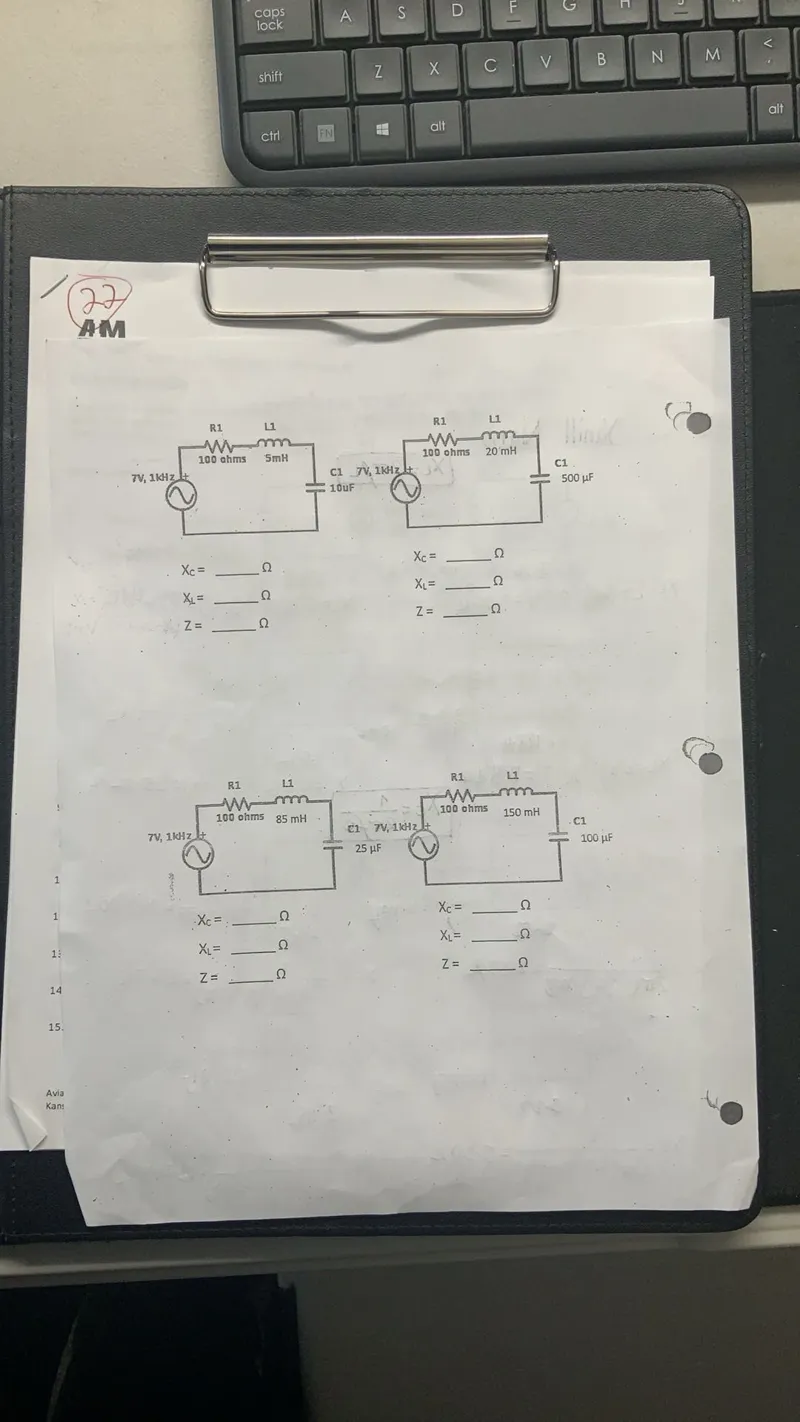Circuit 1: \(X_C \approx \boxed{15.92 \Omega}\), \(X_L \approx \boxed{31.42 \Omega}\), \(Z \approx \boxed{101.2 \Omega}\)
Circuit 2: \(X_C \approx \boxed{0.32 \Omega}\), \(X_L \approx \boxed{125.66 \Omega}\), \(Z \approx \boxed{100 \Omega}\)
Circuit 3: \(X_C \approx \boxed{6.37 \Omega}\), \(X_L \approx \boxed{534.07 \Omega}\), \(Z \approx \boxed{537.11 \Omega}\)

